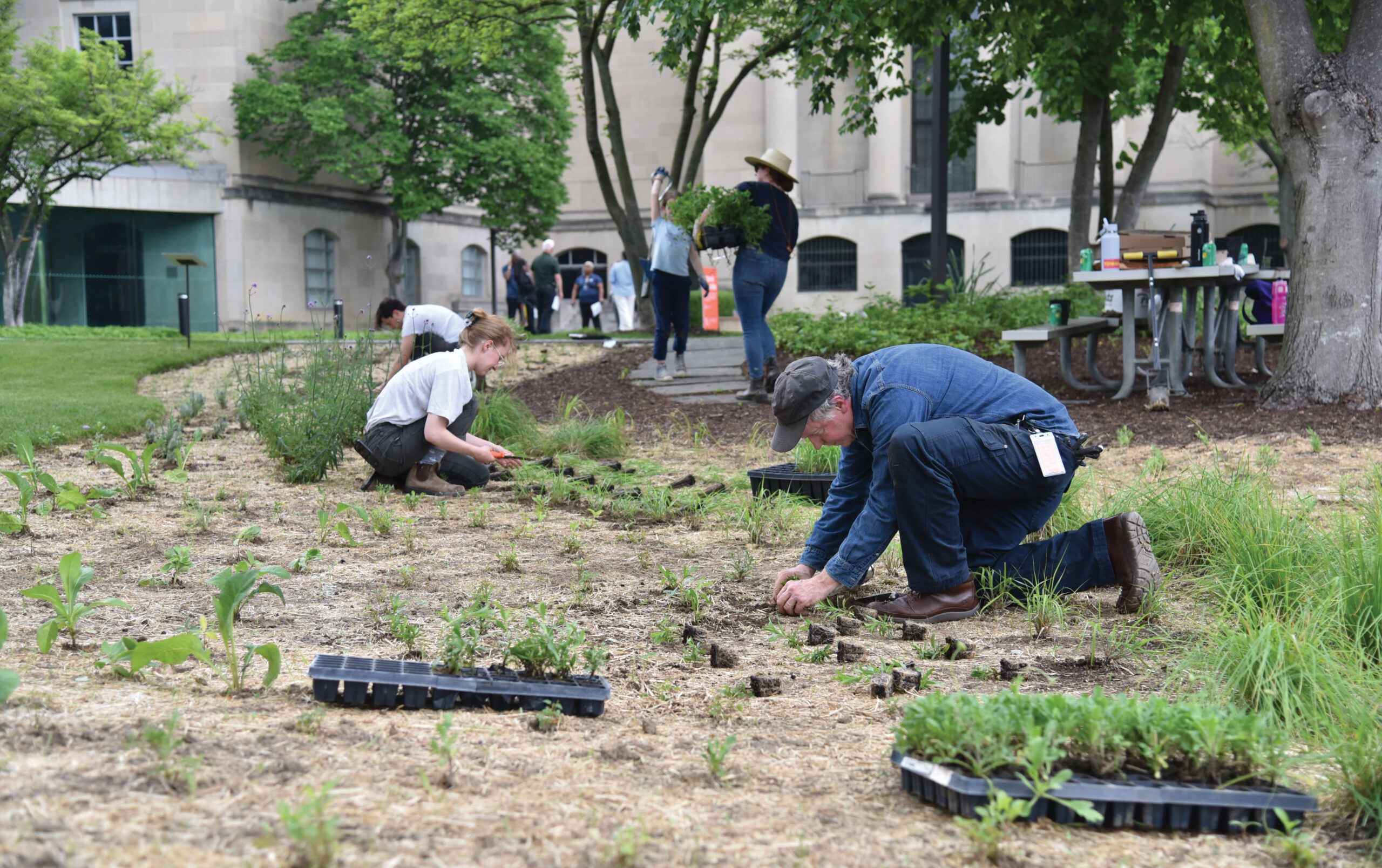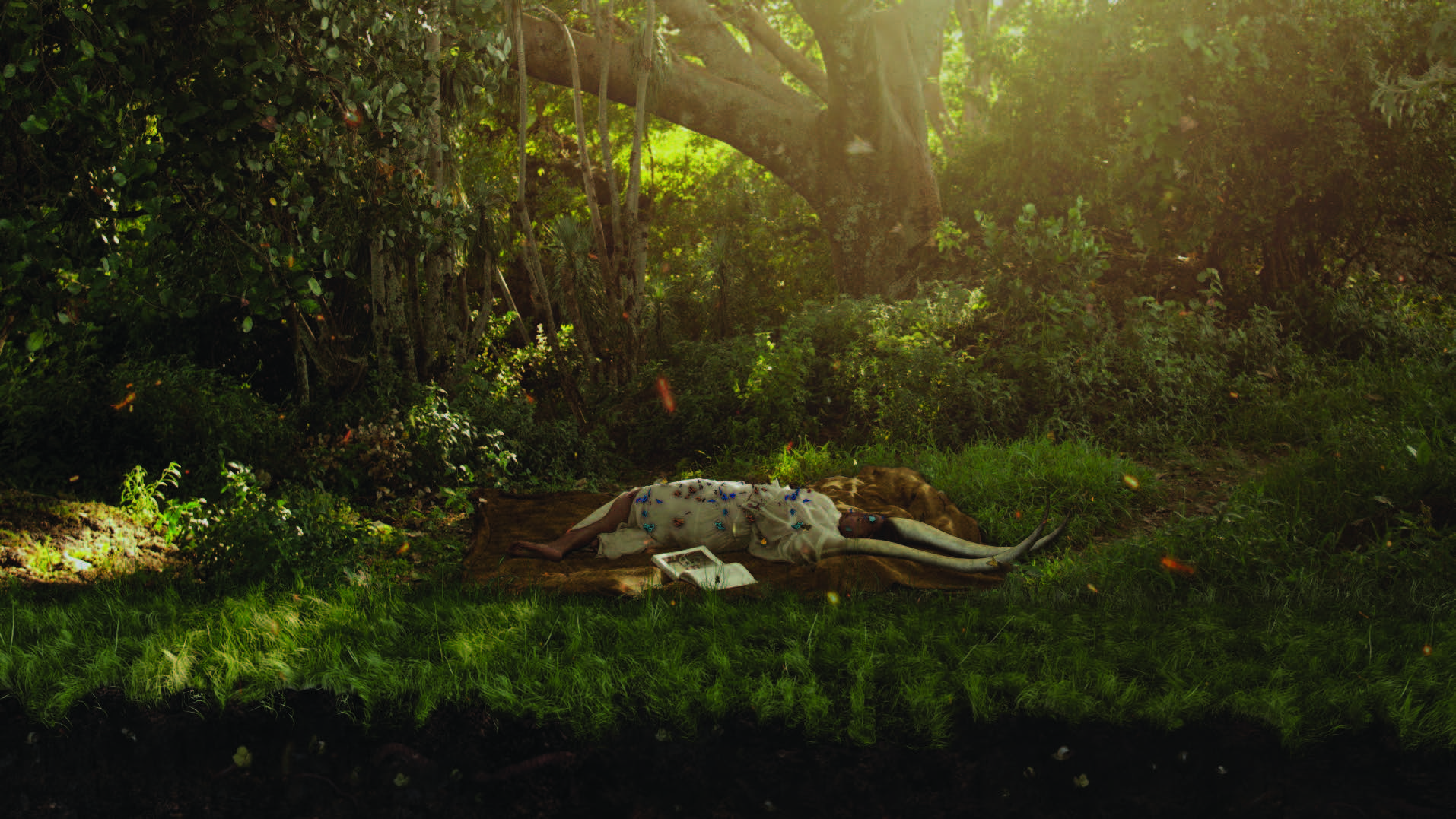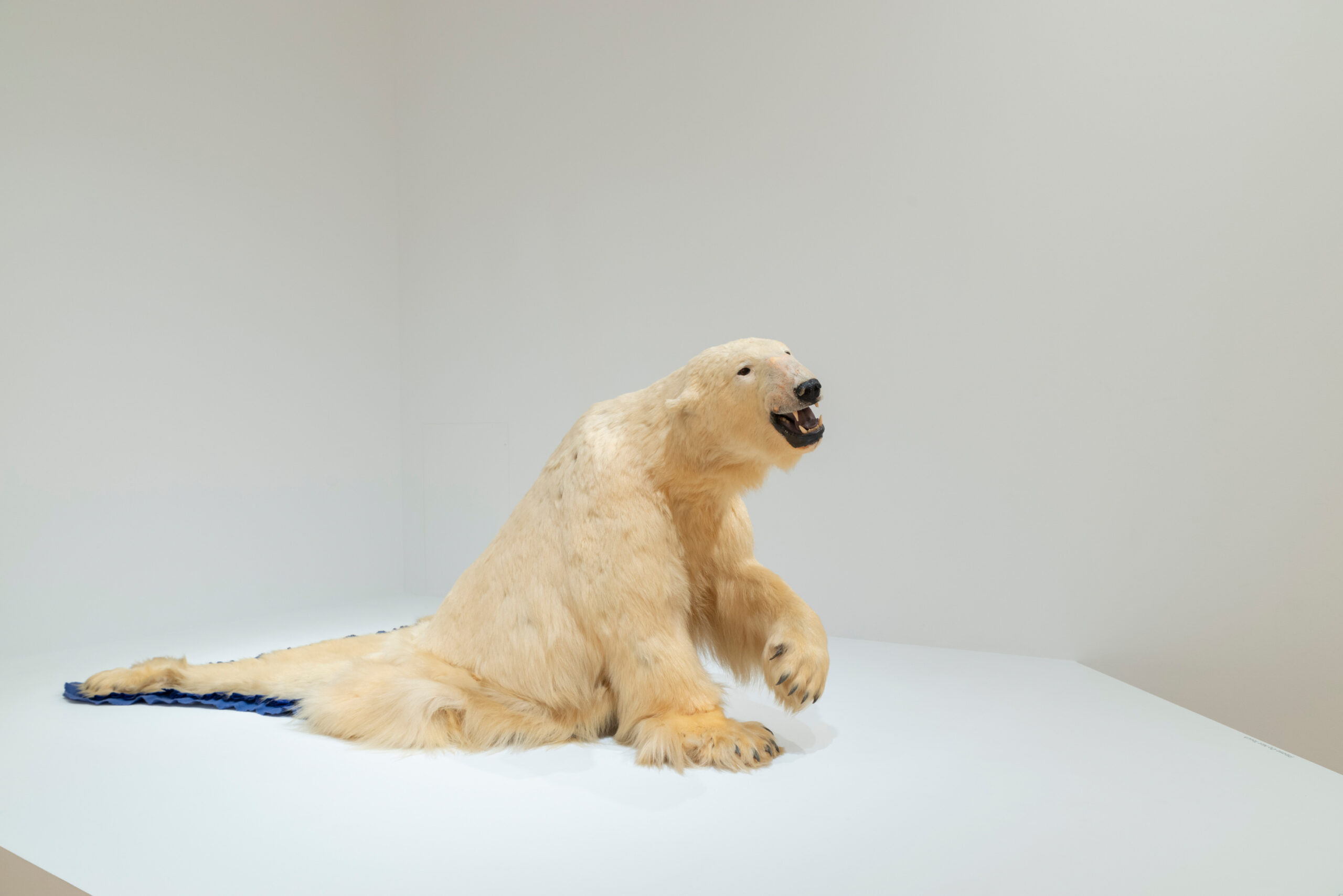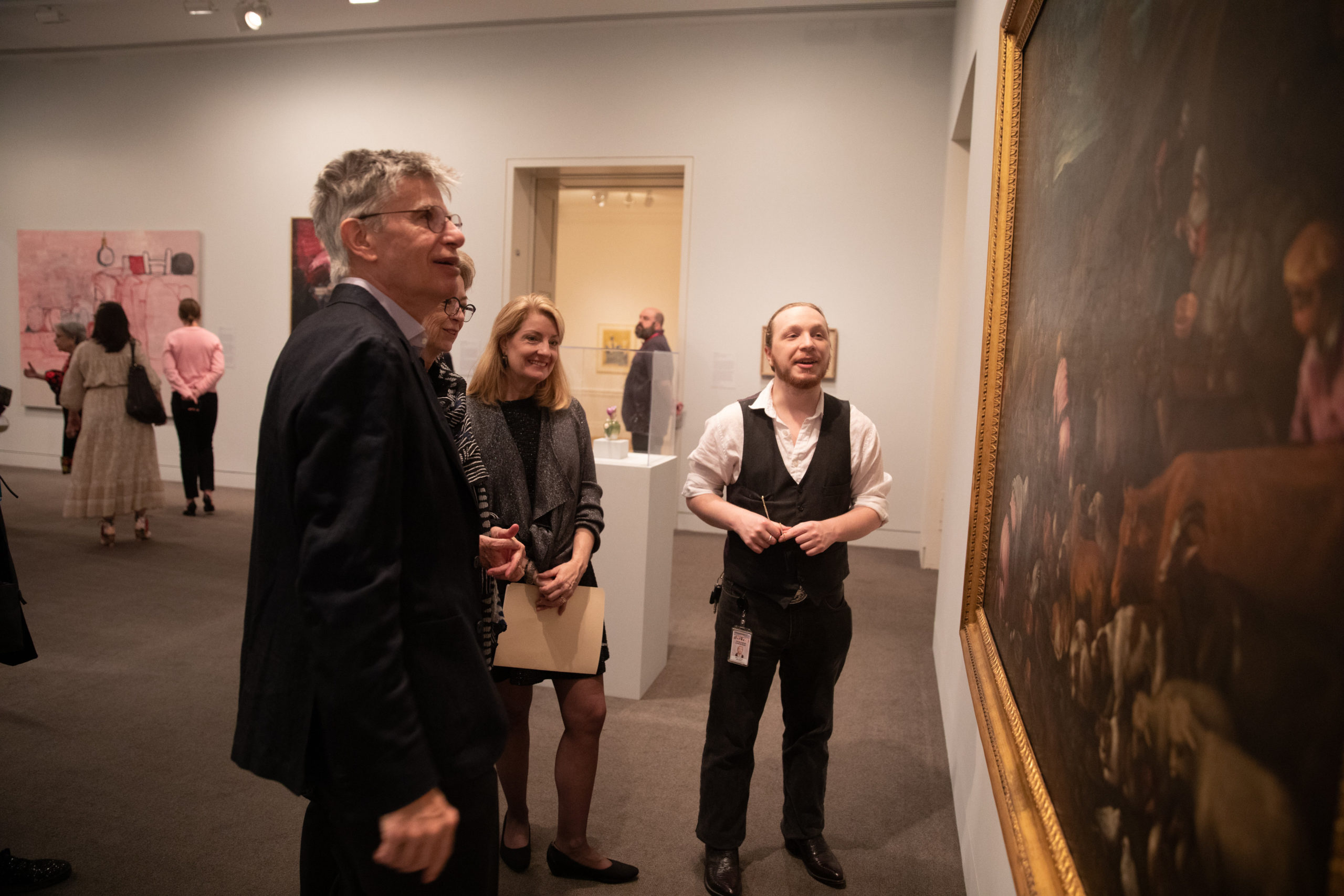
In the final days of the groundbreaking exhibition Guarding the Art, curator and Museum guard Rob Kempton offers an analysis of what it has meant to serve as a curator and how it has—at least for now—changed the relationship between guard and visitor at the BMA.
Since its opening in March, I have watched visitors asking guards questions and snapping pictures with their phones in the galleries hosting Guarding the Art. The exhibition has been a media sensation, and people continue to arrive in droves to see this experimental project fully realized. The number of people who visited the Museum specifically to view Guarding the Art has shocked me. As of June 1, 2022, more than 22,000 people have visited Guarding the Art.
During my six years in security at the BMA, I’ve never seen the Northwest Cone galleries more abuzz. Once, while I stood watch in the exhibition, I overheard a woman say, “Why haven’t other museums done this before? What a beautiful idea.” She and her partner took the time to read each label and ponder the exhibit. Later, she approached me and asked if I had a role. I smiled and said, “Yes, I helped co-curate this exhibition. I’m Rob Kempton.”
“I love what you did with your labels and great picks!” she exclaimed. “What was the process like?”
I told her working with so many disparate voices presented a unique challenge. I framed it as an opportunity to contribute to the Museum through thoughtful work collaborating with multiple departments on various projects.
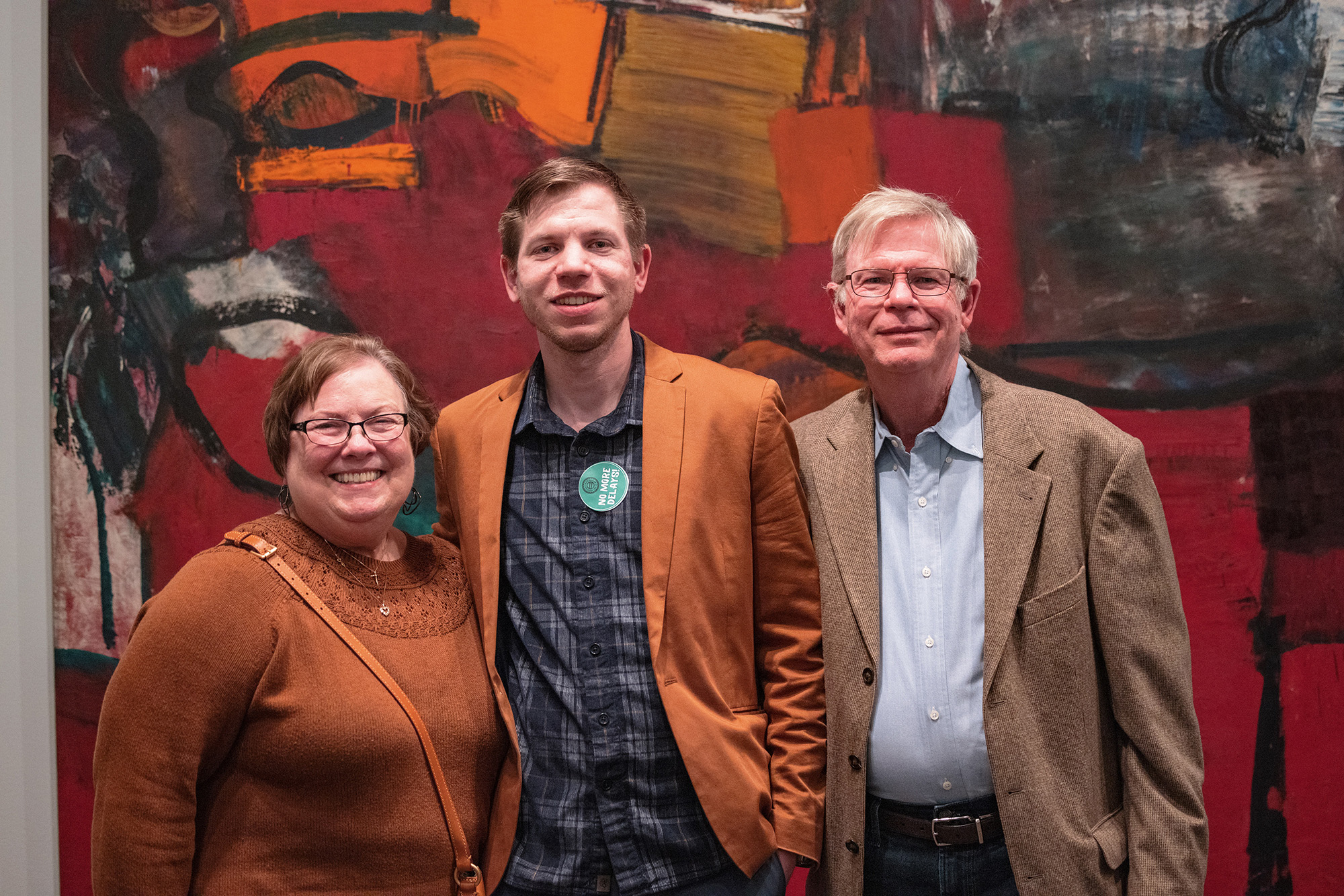
I had hoped Guarding the Art would spark these kinds of conversations. Rather than the wayfinding questions typically posed to us (e.g., “how do I find the lobby?”), visitors wanted to know our relationship to the Museum’s collection, our ambitions, and our inspirations. Alluding to the substantive interactions Guarding the Art promoted, my co-curator Jess Bither said, “I feel my fellow security officers have shared something about themselves, their values, and how they see the world. The public seems excited to engage. I’m glad they are actively seeking out the guards.”
While guarding the new Joan Mitchell retrospective, I often speak with visitors about the late painter and her life. Immediately, they mention Guarding the Art and ask if I helped curate the show. Guarding the Art “opened up new opportunities for people to view the security guards as not just stuffed shirts…[but] people who actually look at [the art] all day, all week, all year,” said Guarding the Art co-curator Mike Jones. Before, visitors passed the guards as if they were not there, but that dynamic has changed since the exhibition opened.
“I feel my fellow security officers have shared something about themselves, their values, and how they see the world.”
Jess Bither
In April and the beginning of May, seven of the exhibition’s co-curators presented gallery talks during which they shared their interpretations of the objects they selected for the exhibition. True to the show’s spirit, Kellen Johnson and Sara Ruark discussed how their experiences in the performing arts affected their choices, while Bither and Alex Dicken hosted a close-looking exercise through collaborative discussions and audience participation. Dereck Mangus led a verbal tour of Baltimore City, exploring the battle sites of 1812, the Washington Monument near his apartment in Mount Vernon, and the vantage point in his choice, The House of Frederick Crey, attributed to Thomas Ruckle. Bret Click took a comprehensive approach, revealing the curation and exhibition development processes for the twenty-six objects included in the show.
In my talk, I focused on the close relationship between the late painter Grace Hartigan and the late poet Frank O’Hara. To contextualize my selection, Interior, ‘The Creeks’ by Hartigan, I read seven of O’Hara’s poem written around the time she finished the painting. Intertwined within the New York School cohort of painters and poets, Hartigan and O’Hara became inspired by each other’s ideas. Scholars have compared O’Hara’s poems to diary entries. Hartigan’s brushwork in Interior, ‘The Creeks’ likewise evokes the immediacy of a diary. I also spoke about my firsthand experiences guarding Alma Thomas’ Evening Glow. I then described how my choices echoed the BMA’s mission to exhibit underrecognized artists.
I hope people now realize that museum guards have more to say than visitors might expect. Guards engage with their museum’s collection daily, read labels, and conduct hours of close looking. Through robust discussions, Guarding the Art has helped bridge the gap between the BMA and the larger community.

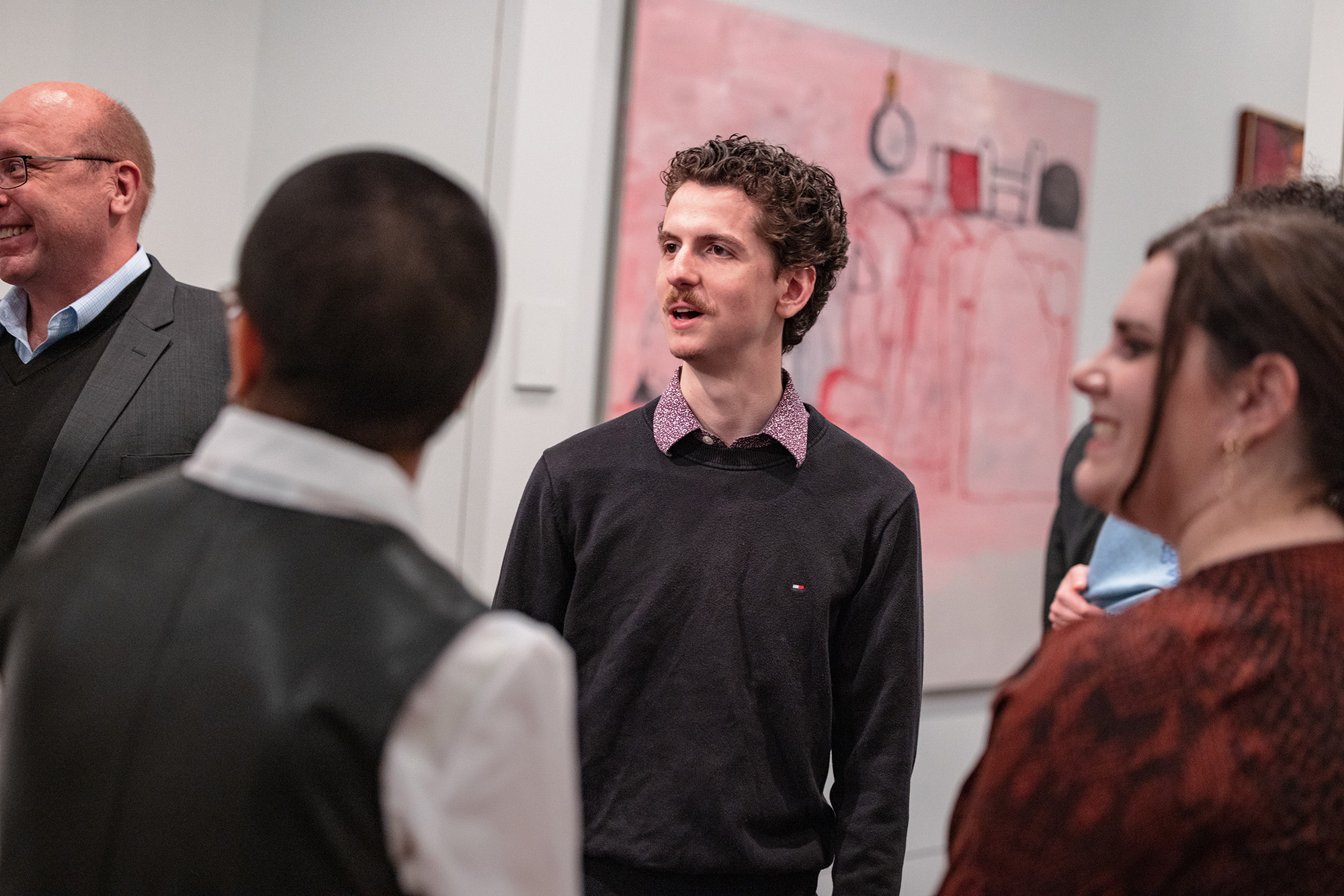

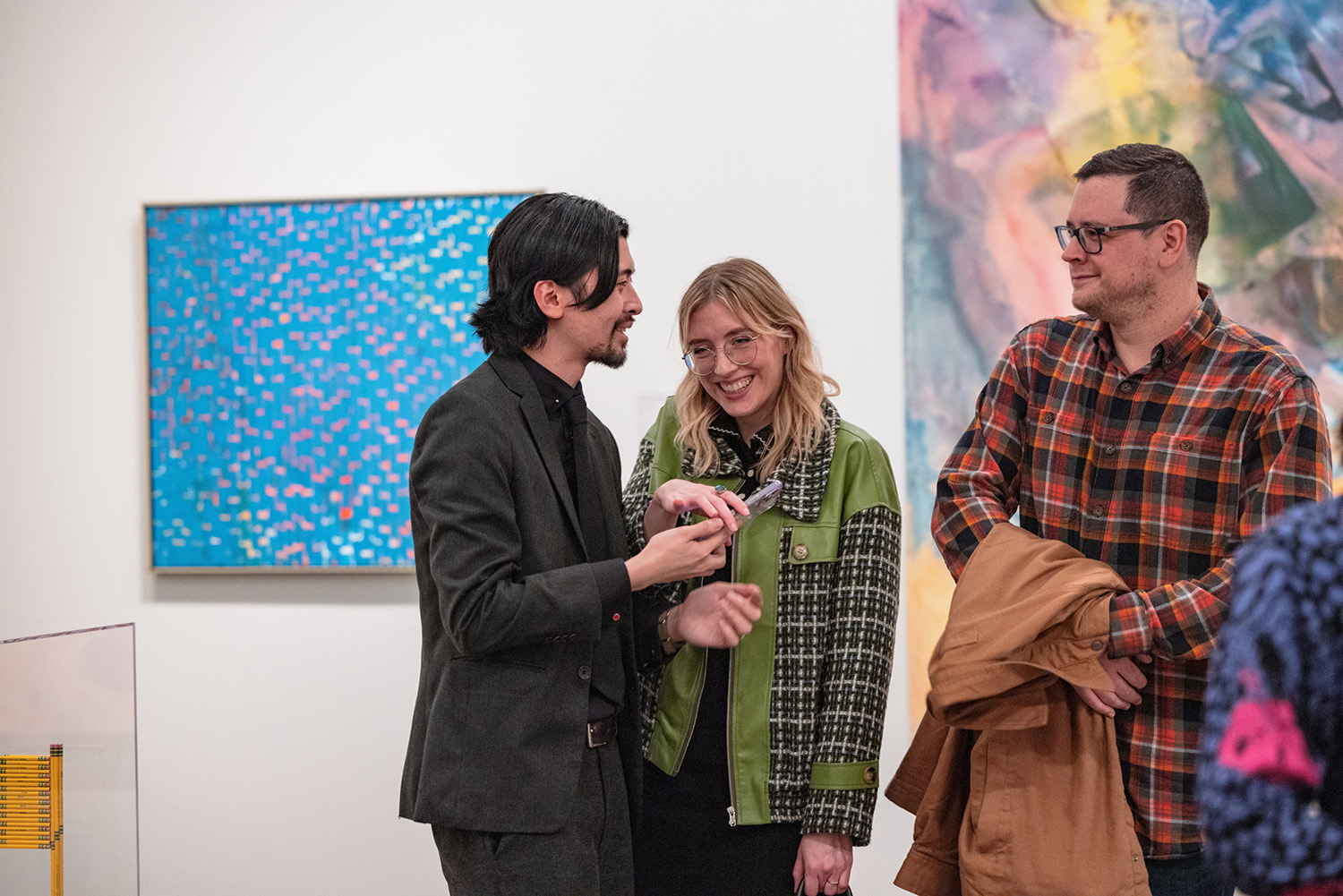
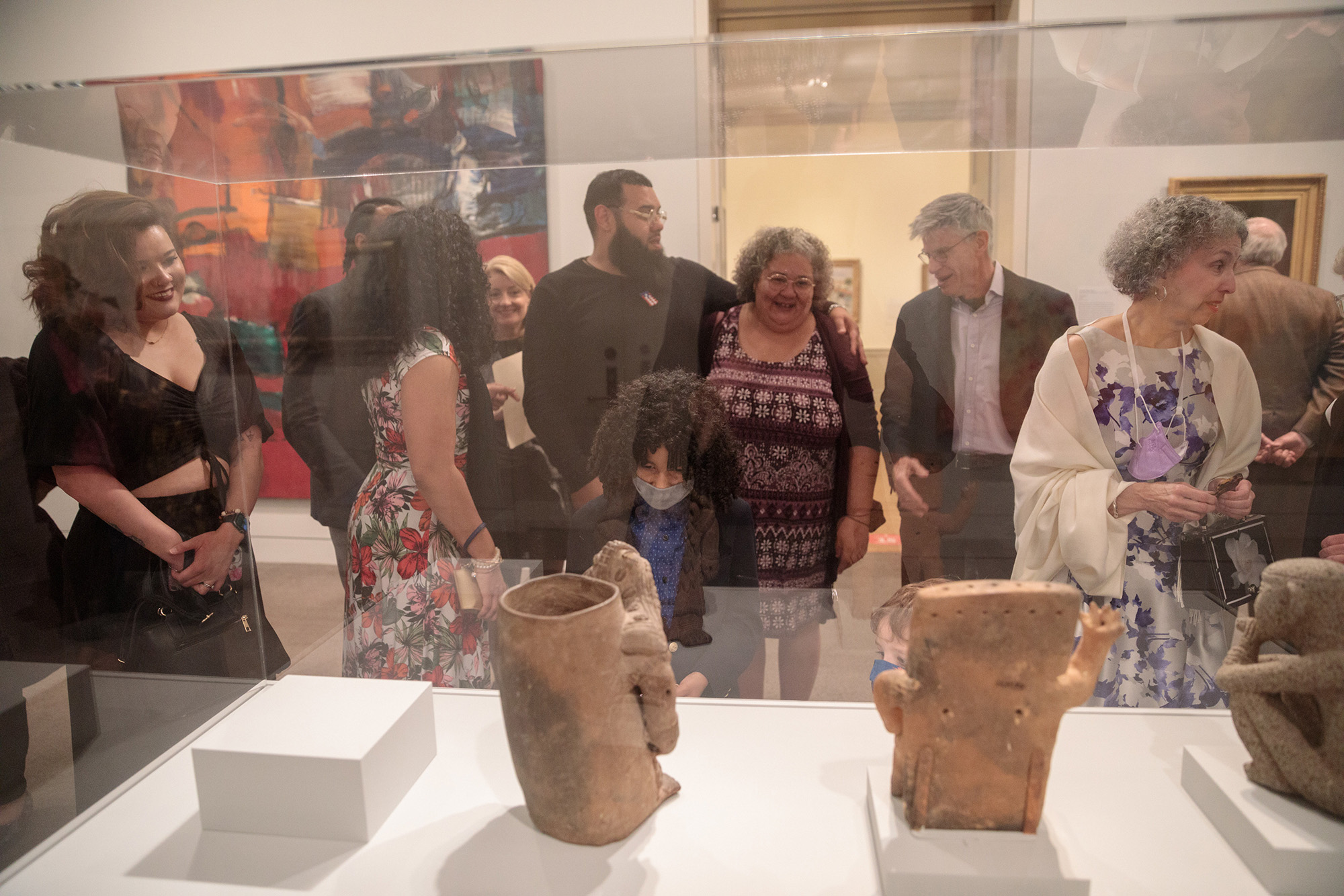
This exhibition “has opened up important dialogues not just about art, but about workers who have been historically overlooked,” Ruark commented. As a result, the Museum has upended institutional misconceptions that have depicted museum guards as unapproachable or uninformed.
“The exhibition has been able to upset those fixed conceptions by extending their frame beyond the job itself and acknowledging the multifaceted nature of the officers’ lives. It relates to labor, art, and personhood in a unique way, and visitors are fully aware of this,” said Dicken. The extent to which museums prioritize and reach their communities hinges on dialogue and access. In its ability to interrogate who gets to talk about art, Guarding the Art exemplifies this.
Over the past year, I experienced Guarding the Art evolve from a nascent concept to a fully realized museum exhibition. As Mangus mentioned, a certain finality settled in when the show became public. It became real. Indeed, as the Dadaist Marcel Duchamp explained in a 1957 lecture, “The creative act is not performed by the artist alone; the spectator brings the work in contact with the external world by deciphering and interpreting its inner qualifications and thus adds his contribution to the creative act.” My curated objects would mean nothing were it not for the visitors who experienced that artwork in person.
Guarding the Art proves when museums deviate from convention, the public will pay close attention. Bither notes, “my colleagues are deserving of [this] curiosity; they are worth listening to.” No one, not even the curators spend more time with the artwork than the guards. Through Guarding the Art, the BMA has championed institutional change and critical self-reflection. Only time will tell if other museums respond.
Guarding the Art is on view through Sunday, July 10, 2022.
The exhibition is generously sponsored by Amy Elias and Richard Pearlstone/The Pearlstone Family Fund, Mr. and Mrs. Jeffrey Legum, Kwame Webb and Kathryn Bradley, the United Way of Central Maryland, David and Elizabeth Himelfarb Hurwitz, and Michael Sherman and Carrie Tivador.


